|
Bhutan's
Nature - Animals
|
 |
Bhutan Nature Animals |
|
 |
Bhutan Information |
|
|
 |
| A Field Guide to Mammals |
 |
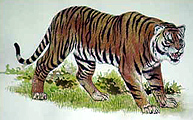 |
| The illustrations for the field guide are being done by VAST |
Bengal
tigers, black panthers, snow leopards, marbled cats, gray wolves, red foxes,
sloth bears, pygmy hogs, Asian elephants, golden langurs - are among the
200 or so mammals found in Bhutan. This rich diversity of mammal species
will feature in the first ever illustrated guide to Bhutan's mammals that
is to be released towards the end of this year according to the department
of forests, agriculture ministry. |
Titled
«The field guide to the mammals of Bhutan», the book illustrated
by paintings and distribution maps will carry technical information on
the mammal, its behavior, habitat and will have a section on any specific
conservation issues.
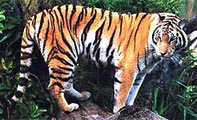 |
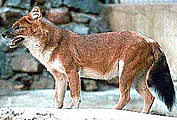 |
"It
will showcase our species diversity," said the forestry department's Bhutan
museum of natural history head, Tashi Wangchuk, who is one of the seven
Bhutanese authors working on the guide. For a small country like Bhutan
200 species of mammals is very rich according to Tashi Wangchuk. |
"North
America is much much bigger than Bhutan but has fewer mammal species,"
Tashi Wangchuk said.
top
 "The
field guide to the mammals of Bhutan" "The
field guide to the mammals of Bhutan" |
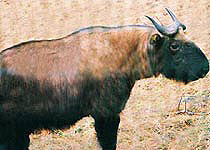 |
"Extensive
field surveys and literature reviews were the two methods we used in gathering
information," said NCD's Karma Tshering, one of the Bhutanese authors.
"The rugged terrain made it difficult to penetrate the extreme interiors."
Tashi Wangchuk said that the authors also used remote sensing cameras and
camera traps to take pictures of noturnal mammals. "But the local people
were the best source of information. We would show them a picture of an
animal and ask them whether they had seen it in the area and then we would
verify its existence by looking for footprints, droppings or other signs." |
The
paintings for the book are being done by the voluntary artists society
of Thimphu (VAST)"It is quite a task to do 200 illustrations of mammals
with accuracy," said VAST's Kama Wangdi. "We are redoing a lot to get it
as accurate as possible. But on the whole it is a learning experience particularly
for VAST." The authors said that because of the level of variation in the
wild of the same animal, paintings were preferred to get the illustration
more scientifically accurate.
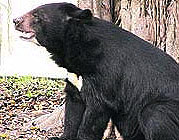 |
The
authors who started work on the book in 2003 after the Bhutan trust fund
(BTF) approved a funding of Nu 2.4 million for the project also extensively
reviewed literature of the Zoologicial survey of India and Bombay natural
history society, the oldest society of its kind in the world and which
holds good information on mammals in this part of the world.
One
of the highlights of the field guidebook project is that it is an all Bhutanese
venture with no reliance on external expertise. |
BTF
director Tobgay S. Namgyal said that the field guide project was one of
the most high impact projects of the BTF. "Although it is small compared
to the rest of our grants this has the potential for a lot of scientific
and educational impacts because work of this nature has never been done
before specially not by a team of our own Bhutanese professionals," said
the director.
top
| Wildlife and People in Bhutan |
 |
| Information on Bhutan |
 |
| Links |
 |
 |
 |
External
links |
 |
Bhutan
Ministry of Agriculture
Renewable
Natural Resources
MOA |
 |
|
 |
|








